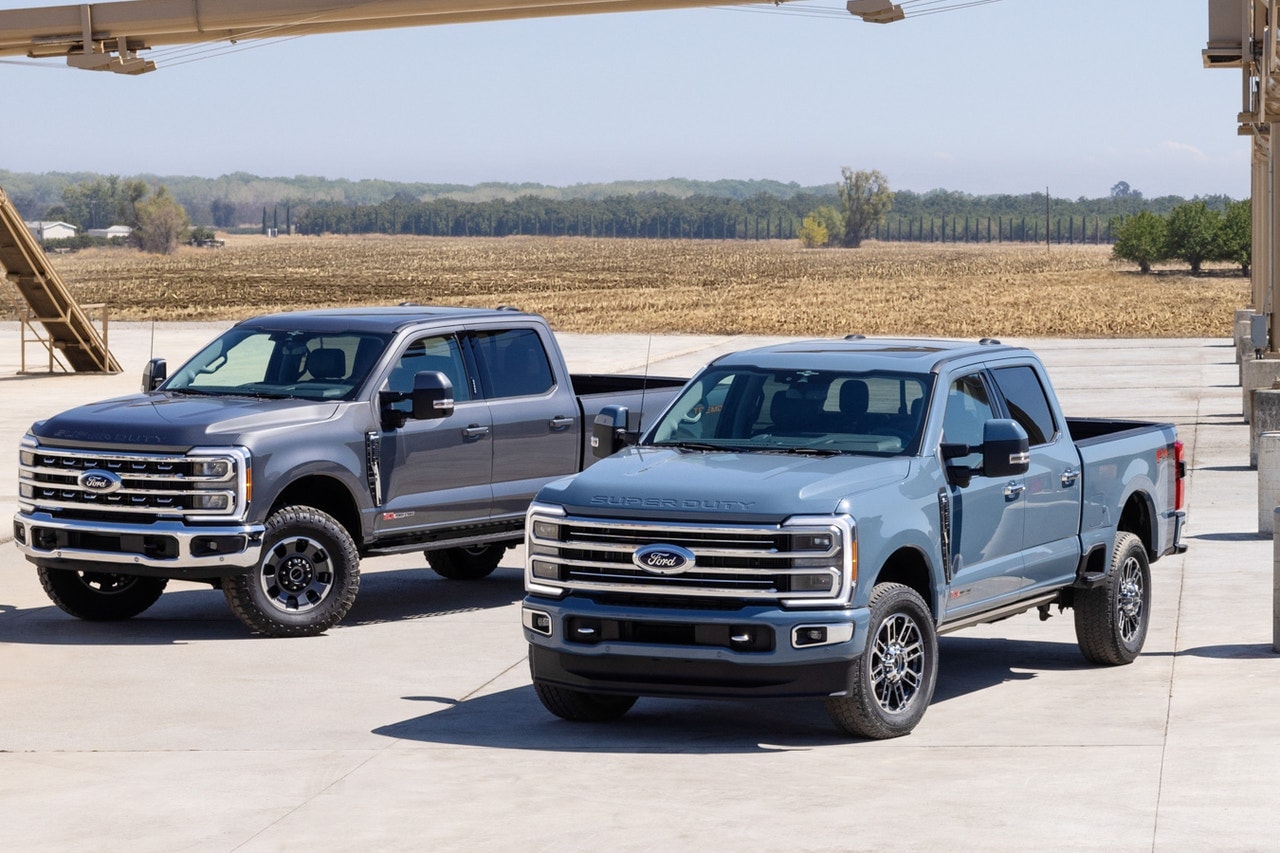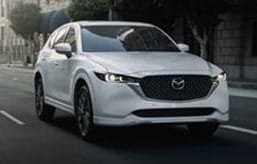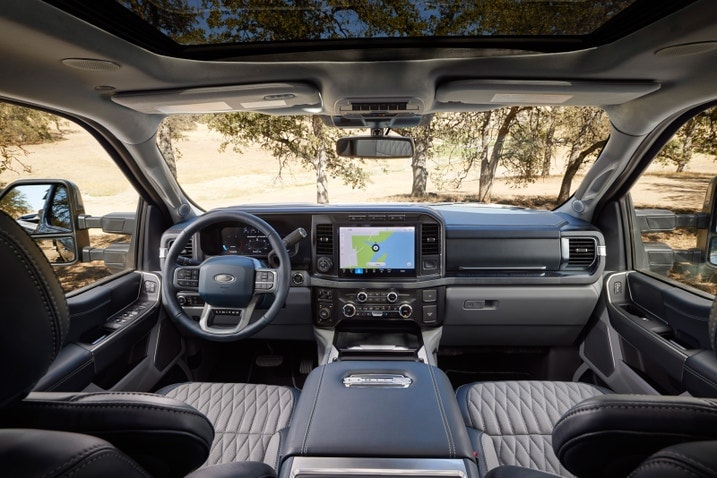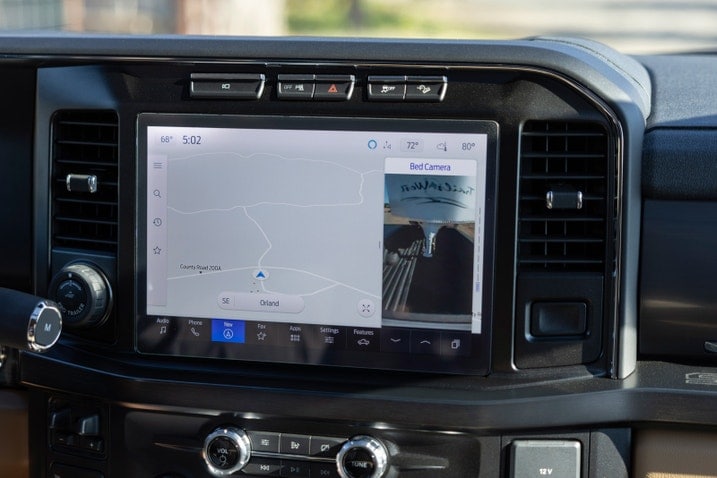- F-Series Super Duty trucks are redesigned for 2023.
- Many new technology features make towing and hauling easier.
- Two new engines, one gas and one diesel, help form a four-engine lineup.
- Launches the fourth Super Duty generation.
First Drive: Redesigned 2023 Ford F-Series Super-Duty Lineup Makes Truck Life Easy
New technology makes towing and hauling easier (and safer) than ever before
The Ford F-150 is one of the best-selling vehicles in the history of the world. But for towing seriously heavy loads or carrying extra payload, the standard F-150 won't always be enough and that's when it's time to turn to Ford's Super Duty lineup. It includes the F-250, F-350, F-450 and even the F-550 grades but those last two are mostly limited to commercial applications, so our testing and impressions will apply solely to the first two models.
And don't let Ford's weird name confuse you: Super Duty is just a fancy way of saying heavy duty; it doesn't mean any more or less (somewhere Don Draper is smiling). For 2023, Ford's heavy-duty truck is fully redesigned and debuts with a fresh interior and two new engines, though the real stars of this makeover are a suite of technologies that make the Super Duty easier to live, tow and haul with than ever before.
What's under the Super Duty's hood?
Gone is the long-serving 6.2-liter V8 that was paired to a dated six-speed transmission. For 2023, a new 6.8-liter gasoline V8 is the base engine, and it makes 400 horsepower and 445 lb-ft of torque and that represents an increase of 15 hp and 15 lb-ft of torque versus the old base engine. The optional gas engine is the same, a 7.3-liter V8 that makes 430 hp and 485 lb-ft of torque.
The 6.7-liter Power Stroke diesel V8 returns with its prodigious 475 hp and 1,050 lb-ft of torque, but if that isn't enough for you there's now a new high-output variant of that engine that bumps output up to 500 hp and 1,200 lb-ft of torque. This high-output version is now the king of the hill for 2023 heavy-duty truck bragging rights as it tops the max power from the available diesel engines in the Chevy Silverado 3500HD and Ram 3500.
The Super Duty's engines are all mated to a 10-speed automatic transmission. Both the F-250 and F-350 will be offered in rear- or four-wheel-drive configurations, with a variety of axle ratios and single or dual rear wheels on the F-350 and above.
How does the F-Series Super Duty drive?
Our time behind the wheel of the Super Duty only included stints with the 7.3-liter gas engine and the new high-output diesel engine. Both engines are vastly overqualified for any sort of on-road driving, providing easy power and smooth shifts via the 10-speed automatic. Without a load in the back, there's plenty of acceleration around town and you can get up to highway speeds easily.
With these vehicles designed primarily with work in mind, there isn't much that can be done to prevent them from driving like you'd think a big truck would: barely any steering feel, some bounciness out of the leaf springs in the rear, and softness in the front suspension. But this isn't really a demerit. To change these things would require compromises in other areas that allow this big truck to do big truck things.
How comfortable is the F-Series Super Duty?
The front seats in the higher trim levels (King Ranch and up) are swathed in leather and very comfortable with a lot of support. Crew-cab models also come with a very large back seat that could easily fit two adults for a long trip, or three in a pinch.
Ride quality isn't the best, but again this is a big truck. It feels steady at highway speeds, and the cabin doesn't get too noisy unless you've got one of the diesel powertrains under the hood and you get into the throttle. Doing so fills the cabin with that signature diesel engine growl but it dissipates as you ease off.
How's the Super Duty's interior?
If you just looked at the outside, you'd assume the 2023 is merely a cosmetic update of the current truck, with similar bodywork and a light revision of the grille and the headlights and taillights. But the interior has been completely redone, though it will feel familiar as it bears a resemblance to the current F-150 (which was all-new for 2021).
Entry-level XL models get an 8-inch center touchscreen, while upper trim levels are treated to a 12-inch touchscreen. The physical gauges in the instrument cluster are gone and replaced with the customizable, fully digital instrument panel on higher trims, too. The interior gets steadily nicer as you move up the trim ladder, culminating in the top-spec Limited model. New options like the max-recline seats from the F-150 and an 18-speaker Bang & Olufsen audio system help elevate the big truck's interior. Work truck models with a bench seat up front feature a foldout flat surface that can be used as a small desk or table while on the go.
What new towing assist features does it have?
Here is where the Super Duty's redesign pays the most dividends. Ford put a lot of thought into trying to make this Super Duty's technology ease a lot of the pain points of truck ownership.
According to Ford, 90% of heavy-duty pickup owners use their trucks to tow, and the Super Duty has added a few new technologies to make this easier than ever before. Most of them debuted on the F-150 previously but we think they make even more sense for the Super Duty. For example, the new Pro Trailer Hitch Assist system can automatically back up the truck to a trailer with a ball hitch and position it right underneath, which makes hooking up a trailer without a spotter exponentially easier. There's also a system that allows you to input the size/weight of your trailer and the truck will let you know if your load is properly balanced based on the trailer's tongue weight.
Ford's Pro Power Onboard system adds outlets for power tools and accessories in the bed of the truck as well as inside the cabin. While it can provide 2.0 kilowatts of power, it pales in comparison to the 7.2-kW maximum output of the F-150 with the available hybrid powertrain. Until Ford decides to make an electrified Super Duty … no hybrid, no access to full power.
For the cargo bed, the Onboard Scales feature measures how much payload you've put in the bed and tells you how close to the truck's maximum rating you're at. This information is displayed on the truck's touchscreen as well as by a progressive, bar-like illumination of the taillights. There's also a new tailgate camera. Ford has mounted a camera and parking sensors on top of the tailgate so that even when you lower the tailgate (say, to hold a long payload item), the 360-degree surround-view and rearview cameras still work.
New technology features for the cabin, too
Another nice addition is 5G connectivity that's standard across the range. Ford says the new Super Duty is the first pickup in the U.S. to feature 5G. An onboard Qualcomm modem taps into AT&T's network and provides Wi-Fi connectivity for up to 10 devices. Ford knows that its customers use the Super Duty to work, so the automaker decided to make it a mobile office as well as something that's tough enough for life on various job sites.
There's plenty of available new safety tech, too. Adaptive cruise control with lane centering now works all the day down to a stop, and there is both front and rear automatic braking as well. There's also a new trailer theft alert feature, which will send a notification through the FordPass mobile app to alert the owner if a trailer has been disconnected after the truck has been locked.
How much can the Super Duty tow and haul?
The Super Duty is offered in several different models, each with their own payload/tow ratings.
The F-250 offers a maximum payload rating of 4,268 pounds, achieved with a regular-cab model with the base gasoline engine. Most versions of the truck offer somewhere between 3,000 and 4,000 pounds of payload capacity. For towing, the F-250 tops out at 22,000 pounds with a conventional trailer or 23,000 pounds with a gooseneck trailer.
Step up to the F-350 and you get separate ratings for single- and dual-rear wheel variants. The F-350 offers the highest payload rating of the three models and carry up to 8,000 pounds, a feat achieved with a regular-cab model, dual rear wheels, the base gasoline engine, and a special max payload package. Most versions of the truck offer somewhere between 4,000 and 5,000 pounds of payload capacity with a single rear wheel, or 6,000 and 7,000 pounds with dual rear wheels. For towing, the F-350 DRW tops out at 28,200 pounds with a conventional trailer or 38,000 pounds with a gooseneck trailer.
The F-450 offers a maximum payload rating of 6,457 pounds, achieved with a regular-cab model and the base diesel engine (dual rear wheels are standard on the F-450). All versions of the F-450 offer over 5,000 pounds of payload capacity. For towing, with a conventional trailer the F-450 tops out at 30,000 pounds or 40,000 pounds with a gooseneck trailer.
Edmunds says
The Super Duty's redesign focused on improving many of the pain points of truck ownership, making towing, hauling and driving one of these large vehicles easier than ever before.







 by
by